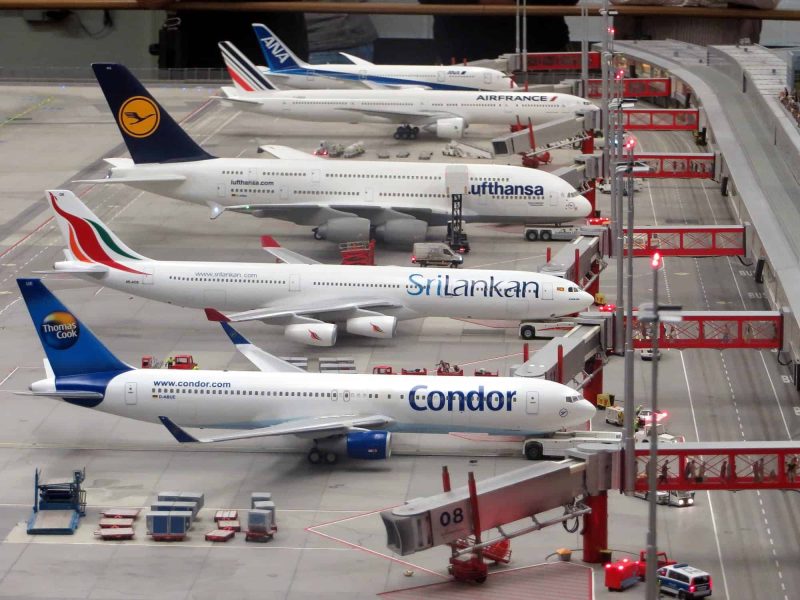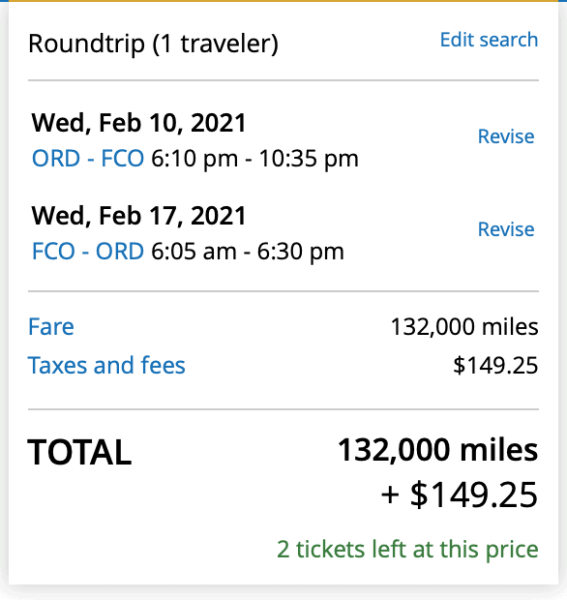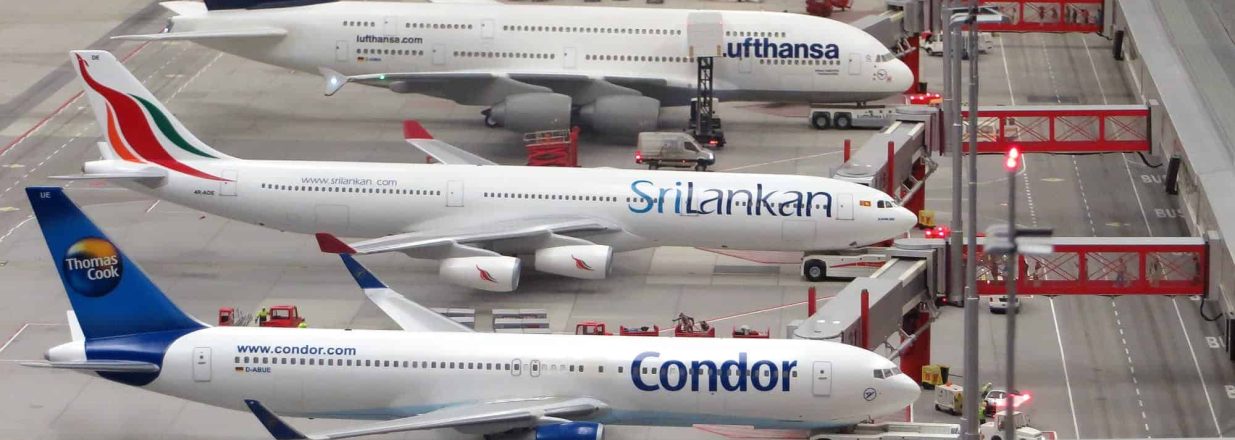Points Panda has partnered with a variety of financial companies including CreditCards.com for our coverage of credit card products. Points Panda and CreditCards.com may receive a commission from card issuers. Opinions, reviews, analyses & recommendations are the author’s alone, and have not been reviewed, endorsed or approved by any of these entities. Terms apply to American Express benefits and offers. Enrollment may be required for select American Express benefits and offers. Visit americanexpress.com to learn more.
The content on this page is accurate as of the posting date; however, some of the offers mentioned may have expired. For more information please read our full Advertiser Disclosure.
Many people assume the best way for free award flights is through committing to one airline and accumulating that airline’s frequent flyer miles. But that’s not the case at all. You’re almost always better off earning credit card points than you are airlines miles. When it comes to credit card points vs. airline miles, credit card points are tremendously more valuable. Here are four reasons why.

#1) Credit card points can be transferred to a variety of different airlines
Probably the biggest benefit for credit card points is the flexibility. Chase Ultimate Rewards points can be transferred to 10 different airline partners. Amex Membership Rewards points are transferable to 19 different airlines partners. Citi ThankYou Points are good with 16 airlines, while Capital One partners with 15 airlines. There are a plethora of options when you have credit card points.
And because there are a variety of airlines, there are also a variety of airline alliances and partners you can also use. So while you might transfer your Amex points to Air Canada, you can redeem those points (now Air Canada miles) for flights on other Star Alliance airlines. For example, you could fly to Portugal on TAP Air Portugal even though you don’t have any TAP Air Portugal’s frequent flyer miles. So you went from Amex points to Air Canada miles to a redemption on TAP Air Portugal. This is the biggest benefit of being able to utilize so many different airline partners.
#2) Different airlines have different redemption rates
Not all airline frequent flyer programs are created equal. Which also means they all charge different amounts of frequent flyer miles, even for the same flight. The ability to transfer to different airlines allows you to spend fewer miles for the exact same flight.
Let’s say you have saved years worth of United Airlines frequent flyer miles. You’ve went out of your way to fly with United Airlines so that you could accumulate as many miles as possible. You’d like to redeem your miles for a flight to Italy, and you found business class award space using your United miles:

This is a great use of your hard-earned United Airlines miles. However, this same itinerary would have only cost 110,000 Air Canada miles, which is a transfer partner with Amex and Capital One. So rather than saving your United miles for years, you could have instead strategically applied for travel credit cards from Amex and Capital One to achieve the same result. And for fewer miles.

And this doesn’t only apply to United Airlines and Air Canada. In fact, there is usually a cheaper way to redeem flights than Delta, American Airlines, or United’s own frequent flyer programs. Credit card points open up the possibilities to more redemption options. This in turn means saving points for future travel and more trips. When it comes to credit card points vs. airline miles, credit card points are clearly the more flexible and diverse option.
#3) Credit card points are far easier to earn than airline frequent flyer miles
Frequent flyer programs used to be easy to understand. For each mile you traveled, you would earn one frequent flyer mile.
But that’s not how the many of the U.S. airlines calculate frequent flyer accrual rates anymore. Instead, your frequent flyer miles are dependent on your class of service, fare type, frequent flyer status, and even how much money you actually paid for the ticket itself.
Sometimes you won’t even earn any frequent flyer miles; I once found a great flight deal that was apparently so cheap, Delta wouldn’t even give me any frequent flyer mileage credit at all.
Frequent flyer programs aren’t designed for the casual traveler. They are designed for the business traveler whose company is paying for the last minute, refundable airfare.
However, credit card points are MUCH easier to earn. In fact, using the right credit card, you might earn more “miles” purchasing the flight than actually flying the flight itself. Some rewards credit cards even allow you to earn up to 5x points on different types of spending, such as travel, dining, grocery stores, gas stations, entertainment, streaming services, and even spending at Amazon.com.
Even better, some credit card points can be transferred to partner airlines for up to a 30% bonus. So rather than only transferring 100k Amex Membership Rewards points to British Airlines, you could instead transfer 130k points for the same price.
And none of these aspects take into account the lucrative credit card sign-up bonuses that are the easiest way of them all to quickly earn points. Earning credit card points is simple and accessible to everyone compared to earning airline miles.
#4) Airlines devalue their frequent flyer miles… especially when they’re looking to save money
If you are hoarding frequent flyer miles for a single airline, you are really putting all of your eggs into one basket. At any point, that airline could “devalue” their frequent flyer miles. This make the miles less valuable and requires you to use more miles for your award redemptions.
Sometimes, airlines give their customers plenty notice for any change in the redemption rates. This is courteous and respectful, as this allows customers to book at the cheaper rates after noticing the same redemption might cost more in the months ahead.
However, airlines have also been known to devalue their frequent flyer miles overnight. So even if you were saving years for a particular redemption, the airline could move the goalposts and require more miles.
Given the economic reality for many airlines, I foresee many frequent flyer program devaluations in the next year. Airlines have already sold frequent flyer miles to banks as a means to quickly raise cash. That means more frequent flyer miles are in the market as airlines look to stabilize financially. Since award flights don’t generate revenue, devaluating their frequent flyer miles seems like the next logical step.
And this is another benefit of credit card points. Since each credit card company partners with 10+ airlines, keeping credit card points vs. airlines miles allows you to avoid the risk of devaluing frequent flyer programs. Could credit card points also be devalued? It’s a possibility. But it’s much less certain than airline’s devaluating their own miles.
Overall, the answer is clear – you are much better off accumulating credit cards points vs. airline miles. If you’re still not sure how points and miles work, you can sign up for our travel concierge and get unlimited consultation for one full year.
Advertiser Disclosure
PointsPanda Deal of the Week!
Looking for the best flight deals? Each week we'll send you updates with the best deals on flights and hotels both using points and cash.


Responses are not provided or commissioned by the bank advertiser. Responses have not been reviewed, approved or otherwise endorsed by the bank advertiser. It is not the bank advertiser’s responsibility to ensure all posts and/or questions are answered.